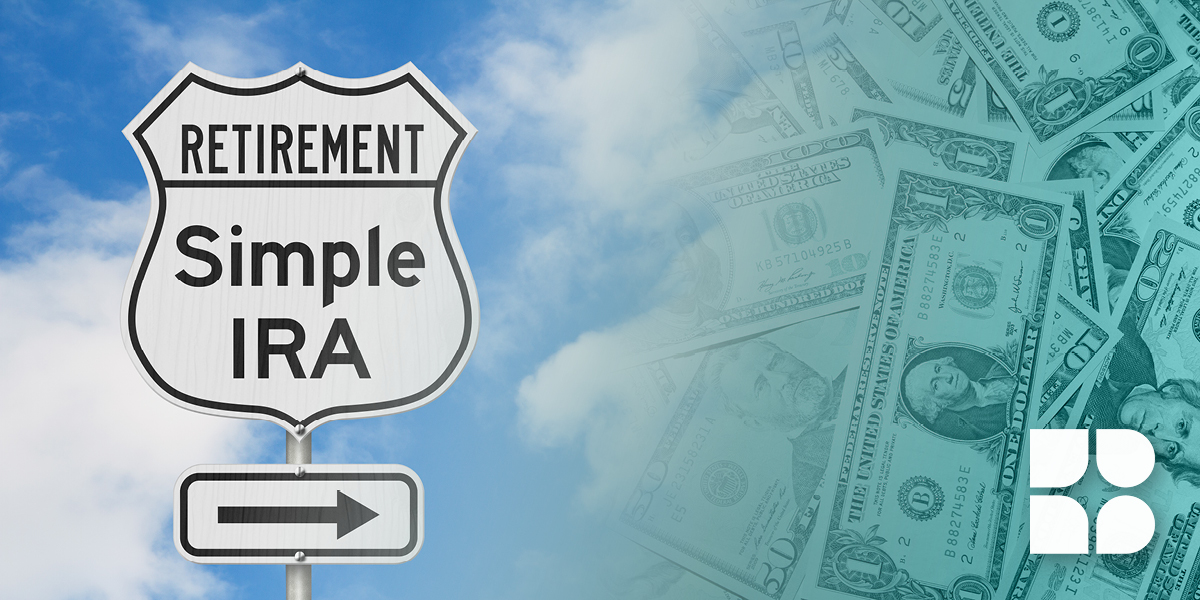Keep your IRA Simple
 The options for retirement savings can be complicated, but one option is so simple it’s literally built into the name. The Savings Incentive Match Plan for Employees Individual Retirement Account, or Simple IRA, is built for small businesses and self-employed individuals. And it really is straightforward. So, let’s dive into the pros and cons of Simple IRAs so you can determine if one is right for your business.
The options for retirement savings can be complicated, but one option is so simple it’s literally built into the name. The Savings Incentive Match Plan for Employees Individual Retirement Account, or Simple IRA, is built for small businesses and self-employed individuals. And it really is straightforward. So, let’s dive into the pros and cons of Simple IRAs so you can determine if one is right for your business.
Eligibility
Small businesses with 100 or fewer employees that do not have another employer-sponsored retirement plan are generally eligible. It’s best to check with your CPA before deciding on a plan, though.
Pros of Simple IRAs
As the name implies, Simple IRAs are easy to set up and maintain. The paperwork to establish one is minimal, and they have lower administrative fees than many other plans. So, Simple IRAs can be cost-effective if you have a small business with a limited budget.
They can also generate employee loyalty, potentially reducing expensive turnover costs. How? Unlike some retirement vehicles, Simple IRAs provide immediate and complete vesting for employees. So, employees contribute fully to their retirement from day one, encouraging them to remain at your business.
And the tax advantages encourage employees to stay in place, too. All contributions are tax deductible, and earnings grow tax-deferred until withdrawn.
And last but not least, Simple IRAs are like free money for employees. The business owner must contribute at least 2% of each eligible employee’s compensation, regardless of whether the employee contributes. If they do contribute, the business owner can match up to 3% of the employee’s income.
Cons of Simple IRAs
Of course, it’s not all sunshine and roses. There are disadvantages for employers and employees.
Perhaps the most glaring are the contribution limits. They are low compared to other retirement plans. Employees can only contribute up to $15,500 in 2023, though there is an additional catch-up contribution of $3,500 annually for those aged 50 and older.
Investment options are limited, too. Compared to 401(k)s, the menu of investments is small, lowering the chance for diversification and growth.
And there are early withdrawal penalties. A 10% early withdrawal penalty, on top of applicable taxes, may apply if an employee withdraws funds before age 59 ½.
How to Start a Simple IRA
If a Simple IRA seems viable for you and your business, here are the steps you’ll need to take. A CPA can help with these if needed.
First, choose a bank or brokerage to be the account custodian. Then, complete the necessary paperwork and determine the contribution percentages for you and your employees. Remember, IRS limits apply.
After establishing the account, communicate with employees to ensure they make regular contributions. Finally, stay compliant with IRS annual reporting requirements by filing the necessary forms and providing employees with the required disclosures.
The Bottom Line
Simple IRAs offer a straightforward and accessible way to save for retirement, especially for small businesses and self-employed individuals. They come with distinct advantages, such as ease of establishment and tax benefits, but also have limitations like contribution limits and early withdrawal penalties. By carefully considering these pros and cons and following the steps outlined to set up a Simple IRA, you can take a significant step toward securing your financial future. Remember to consult with a financial advisor or tax professional for personalized guidance on retirement planning.